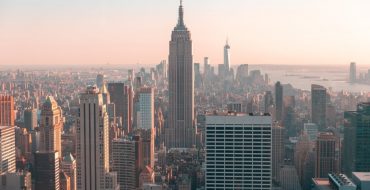
Understanding Green Building Standards in New York
By Abigail Knopps
As new environmental policies and sustainability standards for construction are implemented, it can be difficult to keep up with the seemingly ever-changing rules and regulations – even as sustainability efforts continue to grow within the industry.
While some states may be more lenient when it comes to environmental regulations, others may be stricter leading to confusion and fines if state standards are not achieved.
To aid in understanding the main differences, AMAST has created a series of articles focused on the most common green building policies across the many states AMAST is located in.
This first article will focus on implemented policies in New York State with a special focus on New York City.
New York
Many improvements have been made in recent decades to reduce carbon emissions across the state. Between 1990 and 2016, New York saw a 13 percent reduction of emissions across the board. In fact, as of 2016, buildings only account for 30% percent of all greenhouse gases released in the state – sharp reduction from previous decades!
How did we get here?
Rather than overextend their resources, New York has chosen to focus the bulk of their resources on carbon reductions across all sectors. To do this, politicians at both the state and local level have introduced bills aimed at mitigating the effects of greenhouse gas emissions.
New York City Climate Mobilization Act (New York City Int. 1253)
71% of greenhouse gas emissions released in New York city alone are attributed to buildings. The New York City Climate Mobilization Act seeks to cut emissions in buildings larger than 25,000 square feet.
- Sets annual carbon intensity limits on building emissions based on “occupancy groups”. Compliance for the highest 20% of emitting buildings in each group must be achieved by 2024. Compliance for the highest emitting 75% of buildings in each group must be achieved by 2030. This provides flexibility for building managers and owners to address potential limitations (such as technology or funding) and still be compliant by the necessary date.
- Applies to 50,000 of New York Cities largest buildings (excluding rent-stabilized buildings).
- Goal of reducing greenhouse gas emissions by 40% by the year 2030.
Enacted in 2007 by then-Mayor Mike Bloomberg, PlaNYC is a strategic 30-year plan for making the city of New York greener and more resilient to the changing climate. By bringing together more than 25 city agencies, PlaNYC pools resources and expertise to determine the best course of action moving forward.
With a bold agenda, here is what PlaNYC was able to achieve by 2011:
- More than 200 acres of parkland had been added to the city.
- 110,000 units of affordable housing had been created or renovated.
- Greenhouse Gas Emissions fell 13% below 2005 levels.
- Neighborhoods and local organizations developed plans to make their surrounding environment more sustainable.
- Development of “Enterprise Green Communities Certification” to ensure sustainability throughout the construction and operation of buildings.
Here is what PlaNYC was able to achieve by 2014 under Mayor Bill de Blasio:
- 800,000 trees have been planted, vastly improving air quality.
- Reduction of carbon emissions by 19% of 2005 levels.
- 48 out of 111 “New York City Green Codes Task Force” proposals have been implemented since the measure was introduced in 2008.
In 2015, PlaNYC was renamed to OneNYC to account for poverty and income inequality. Here is what OneNYC was able to achieve by 2019:
- Reduction of greenhouse gas emissions by 17% below 2005 levels.
- Collaboration with regional stakeholders and utility providers to divest $5 billion away from fossil fuels and invest in climate solutions.
- Billions of dollars have been invested in each borough to strengthen infrastructure and adapt neighborhoods to the changing climate.
Climate Leadership and Community Protection Act
Enacted in 2019 by Governor Andrew Cuomo, the Climate Leadership and Community Protection Act “establishes ambitious goals to reduce GHG emissions 40 percent by 2030 and 85 percent by 2050 from 1990 levels” across the state with the end goal of carbon neutrality.
There are two specific goals:
- Increase energy efficiency.
- Move towards electricity generation by renewable resources. Aim of reaching 70% renewable energy generation by 2030 and 100% renewable energy by 2040.
.